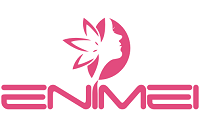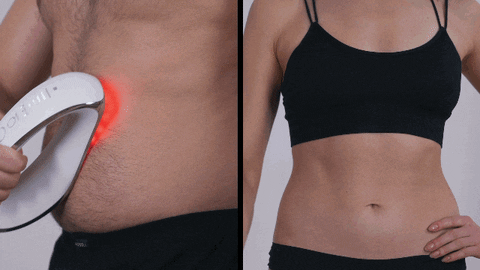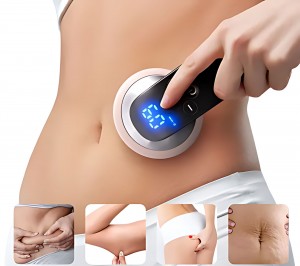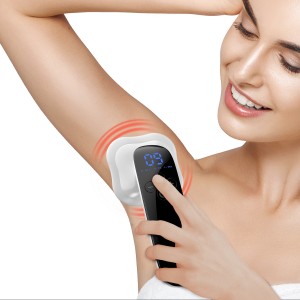In recent years, with the improvement of consumption level, the popularity of medical aesthetics, and the changes in social occupations, people’s requirements for body image are getting higher and higher. These factors are all driving the development of the medical aesthetics industry. As an important part of the beauty industry, beauty instruments have experienced rapid development in the past few decades.
The history of beauty instruments can be traced back to the beginning of the 20th century. The earliest beauty instruments mainly used mechanical principles, such as steamers and massagers, for skin cleaning and massage. With the advancement of technology, beauty instruments have gradually incorporated electronic technology and high-tech means, making beauty treatments more efficient, safe and precise. In the late 20th century and early 21st century, laser technology, radio frequency technology, ultrasonic technology, etc. began to be widely used in the field of beauty instruments, bringing many new beauty therapies and treatment methods. Laser beauty instruments are used to remove acne scars, wrinkles and hair removal, radio frequency beauty instruments are used to lift skin and improve wrinkles, and ultrasonic beauty instruments can lift and tighten the skin. The emergence of these high-tech beauty instruments has brought about revolutionary changes to the beauty industry.
As a necessary part of the medical device market, the medical beauty device market will burst out huge development potential with the continuous attention and demand of consumers for beauty and health, and will be accompanied by the iterative upgrading of technology. According to market research data, the global beauty instrument market has maintained continuous growth in the past few years. As of 2021, the global beauty instrument market size has exceeded 100 billion US dollars, and it is expected to continue to grow in the next few years. Among them, the Asia-Pacific region is the main growth driver of the beauty instrument market, and the Chinese market occupies an important position.
Currently, beauty instruments on the market can be divided into three categories according to their usage scenarios:
Home appliance series
The products of this series are mainly for home use. They use radio frequency, light waves, micro-current, steam, vibration and other technical principles to achieve beauty effects. Typical equipment includes Tripollar, newa, large and small row lights, refa, facial steamer, and facial cleanser.
Life beauty series
Mainly using cosmetics, health care products and non-medical devices and other non-medical means to carry out non-invasive beauty care such as skin care, massage, maintenance or health care for the human body, the more typical representative is bioline.
Medical beauty series
- Facial management series
Because the face is the key area for the use and maintenance of beauty instruments, it can be further subdivided into facial detection, cleaning and hydration, and facial anti-aging. Typical equipment includes smart mirrors, small bubbles, skin comprehensive management instruments, ultrasonic knives, Thermage, and Thermage.
- Hair removal and skin rejuvenation series
The products of this series are mainly in the field of photoelectric equipment, from OPT hair removal, to 808nm semiconductor hair removal, 980nm red blood removal, to the latest Q-switched laser, fractional laser spot removal, whitening and skin rejuvenation.
- Slimming and shaping series
It mainly uses the cold and hot effects to dissolve and destroy fat, while the heating and fat-dissolving technology generated by ultrasonic and radio frequency technology accounts for the vast majority. Some instruments also assist in negative pressure technology. The cryolipolysis instrument combines negative pressure and refrigeration principles, and Thermage and UltraShape both use focused ultrasound. The fat knife and Thermage all use radio frequency heating. High-frequency waves, fine carving instruments, and acid-draining instruments also take into account fat reduction, shaping and health preservation.
- Private repair series
It mainly uses ultrasonic, laser and other equipment to tighten, maintain and reduce the pigmentation of the female vagina, so as to achieve the effects of beauty, tightening, nourishing and protecting the vagina. There are private ultrasonic knives, private fractional lasers, hair removal series equipment, etc.
According to the technical principle of action, it is subdivided into
1. Electric current and pulse method: Using microcurrent pulse modulation technology to act on the skin, meridians, and acupuncture points of the body to achieve firming, wrinkle reduction, and beauty effects. Examples of these devices include low-frequency therapy devices, meridian therapy devices used in rehabilitation and medical industries, as well as HPT health devices, acid removal devices, and 3D/5D sculpting devices.
2. Micro-vibration method: Using mechanical vibration or voltage stimulation to tighten the skin, increase elasticity, and enhance skin cell metabolism. Examples include vibrating massage heads like oxygen bubble vibrators.
3. Light therapy method: Using different colors of light to improve the condition of the skin, calm inflammation, and reduce redness. Examples include photon skin rejuvenation devices and spectrometers. There are also skin analysis devices that use specific light spectra for detection and analysis, such as intelligent magic mirror devices.
4. Thermal methods: Using heat radiation or conduction to raise body temperature and accelerate metabolism. Examples include wax melters, red light irradiators, and moxibustion devices.
5. Laser beauty: Based on the principle of selective light absorption and photothermal decomposition, lasers are used to destroy hair follicles, break down pigments, and treat various skin issues such as hair removal, tattoo removal, spot lightening, and mole removal. Examples include IPL/E-light devices like OPT hair removal, specific wavelength 808nm semiconductor hair removal, 980nm wavelength for redness reduction, and advanced lasers like picosecond and femtosecond lasers that minimize skin damage.
6. Ultrasound method: Utilizing the high-frequency oscillation of ultrasound to generate high-energy movements in the skin, resulting in skin tightening effects. Mainly used for product penetration and absorption enhancement in various skin management devices.
7. Electronic and ion penetration: Using electronic currents to physically penetrate and deliver cosmetic products or medications into the skin for cosmetic effects. Examples include ion bars and ion clamps in comprehensive Korean skin management devices, which can help extract blackheads and facilitate the absorption of essences.
8. Radiofrequency: Applying high-frequency oscillating waves to the skin surface to tighten the skin and reduce wrinkles. Radiofrequency devices vary in frequency, such as 40.68MHz for thermal lifting and 5M for micro-movement radiofrequency used for product penetration and absorption enhancement.
9. Hydrotherapy: Using the effects of water flow, temperature, and affinity with the human body to achieve overall body beauty. Devices such as steam cabins and floating tanks are often used in combination with steam therapy.
10. Pure oxygen jet: Using specialized equipment to deliver oxygen at a certain pressure to the skin tissue, increasing cellular oxygen intake. Examples include oxygen injection devices and oxygen spray guns integrated into small bubbles.
11. High-speed penetration: Similar to oxygen jet, but this type of device pressurizes liquid products into high-speed gas state, breaking through the skin’s surface barrier and directly entering the skin for better absorption. Examples include non-invasive water light devices.
It should be noted that the beauty device market is diverse, and the development of the beauty device industry in China is still in its early stages, without dominant brands. The market trend for home beauty devices is moving towards more professional, effective, and safe devices. For example, transforming large-scale instruments used in medical beauty institutions into consumer products that can be used at home will involve effectiveness and safety issues. Currently, the penetration rate of home beauty devices in China is not high, and medical-grade home devices will be the next trend in the beauty skincare market. However, the challenge for the industry is that consumers have doubts about how to choose beauty devices. The penetration rate of medical beauty device users is not as high as expected, and the pricing of beauty devices is generally high, creating a cognitive barrier for consumers. There are limited channels for consumers to understand the principles behind beauty devices and the “black technology” behind them.
Post time: Dec-06-2023



